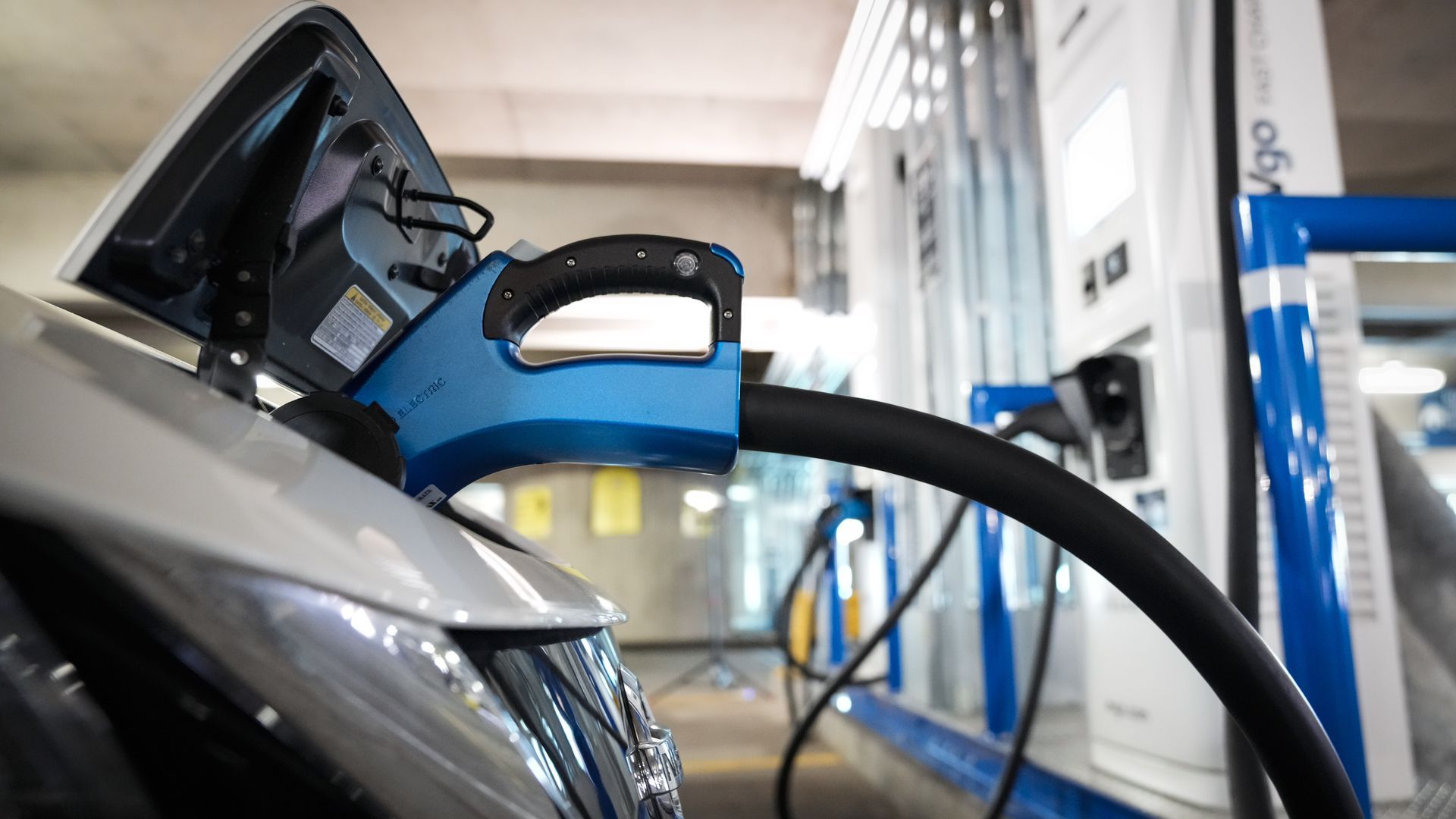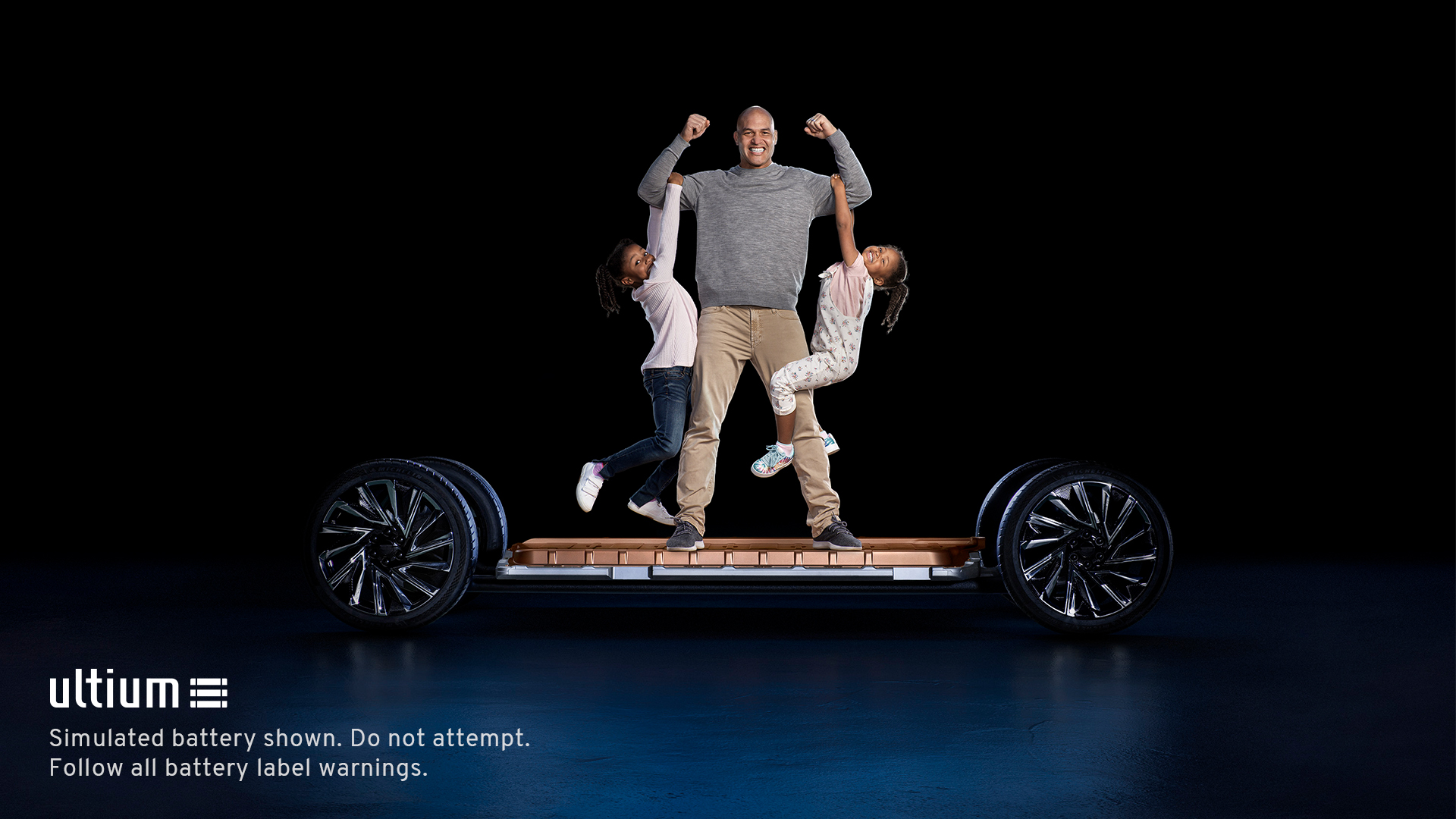| | | | | | | Presented By General Motors | | | | Axios What's Next | | By Bryan Walsh, Joann Muller, Jennifer A. Kingson and Erica Pandey ·Aug 06, 2021 | | It's Friday, and I'm in love with today's stories, including the overbooked wedding industry, expanding EV charger access, and saying goodbye to long-distance Olympic racewalking. "What was next" trivia: On this day in 1945, the first atomic bomb was used in war on Hiroshima. What was the bomb's code name? - Credit to reader Beverly Miller for being the first to note that Lincoln instituted the first income tax in the U.S. on Aug. 5, 1861.
- Send your answer, along with tips and feedback, to whatsnext@axios.com.
Today's Smart Brevity™ count: 1,337 words ... 5 minutes. | | | | | | 1 big thing: The crazy, backed-up wedding industry |  | | | Illustration: Sarah Grillo/Axios | | | | After a long, pandemic-induced wedding drought, the industry is busier than it has been in decades — and venues, vendors and planners are feeling the squeeze, Erica Pandey writes. Staggering stat: There will be an estimated 2.5 million weddings in 2022, which is the most the U.S. has seen since 1984, according to The Wedding Report, a market research firm. - To put that in context, there were about 2.1 million weddings per year before the pandemic and just 1.2 million weddings in 2020, due to pandemic cancellations.
- "The surge is really coming on next year," says Shane McMurray, founder of The Wedding Report.
What's happening: While some couples had Zoom weddings, most postponed their celebrations because large, unmasked gatherings were not allowed in most states. On top of that, many more couples got engaged during the pandemic and are now planning weddings, too. As a result, venues are booked up through 2022, and even into 2023, and florists, photographers and planners are working overtime. - "It's not sustainable for human beings to do this," says Laine Palm, a wedding planner and coordinator based in Minneapolis. "We're tired, and we can't keep doing three weddings in a weekend, which is what we're doing now."
- Palm says she's increasingly seeing weddings spill onto Thursdays and Sundays as venues run out of Fridays and Saturdays. She even did a Monday wedding this summer.
- She's booked through the end of next year and has started getting so many inquiries for 2023 that she has decided to not even field them until January 2022.
Wedding budgets are also back up, after a dip in 2020. Couples are spending an average of $22,500, up $3,000 from 2020, and roughly equal to 2019 levels, CNBC reports, citing data from the wedding website The Knot. But, but, but: This is just a bubble for the wedding industry, experts say. "To be honest, this isn't really growth," says McMurray. "This is pent-up demand." - Overall, the number of weddings has been trending down in the U.S. as more and more couples choose not to get married or not to have a pricey celebration, and that trend will continue post-pandemic, he says.
Share this story |     | | | | | | 2. Where Biden's 500,000 EV charging stations should go |  | | | A public charging station at Union Station in Washington, D.C. Photo: Drew Angerer/Getty Images | | | | Fewer than 10% of Americans have easy access to an electric vehicle charging station, and those who do tend to be wealthy and white, Joann Muller writes. Why it matters: The Biden administration wants EVs to comprise 50% of all new car sales by 2030, an ambitious target that will likely require broader consumer incentives. But if electric vehicles are going to achieve mass market adoption, people also need to be able to find charging plugs. - While most early buyers of EVs have chargers at home, it's not so easy for renters or people who live in multi-unit dwellings to find a place to plug in.
Where it stands: The U.S. has 104,000 public charging plugs available today, just 18% of which are so-called "Level 3" or "DC fast chargers," which can replenish an EV battery in an hour or less. - President Biden wants to see an additional 500,000 public charging stations deployed nationwide to support his EV ambitions.
The good news: There's an expected $7.5 billion for EV charging included in the $1.2 trillion "hard" infrastructure package currently being debated in Congress. Driving the news: A new analysis of EV charging access in the 50 largest U.S. cities could help authorities decide where to put those plugs to optimize public access. - The report by location analytics firm Mobilyze.ai, and funded by the Toyota Mobility Foundation, studied demographic data, EV ownership and existing charging locations to see which U.S. households have convenient access to public charging and which do not.
What they found: Only 9.7% of households in U.S. cities have access to a public EV charging station within 1/4 mile (or a 5-minute walk) from home. - Black and Latino communities have significantly fewer charging stations than white neighborhoods. In Baltimore, Atlanta, Washington, D.C. and Boston, for example, the percentage of Black people living within a 5-minute walk of a charging station is at least 20% lower than in the rest of the city.
- The U.S. has 18.5 EVs per charging plug today, but international benchmarks suggest one charger is needed for every 10 to 15 EVs. Even in California, the leading U.S. market for electric cars, EV adoption is outpacing charger deployment in some cities.
The catch: EVs are still more expensive on average than conventional vehicles, so closing the charging gap is only one step to a more equitable electric vehicle future. Read the rest |     | | | | | | 3. The 49-day wait to get an engineering job |  | | | Illustration: Shoshana Gordon/Axios | | | | Engineering job seekers wait an average of 49 days to get hired after submitting job applications, per a new LinkedIn analysis, Erica writes. The big picture: Employers are desperate to fill a record number of open positions across industries, but the hiring process is still taking a long time for some types of jobs. - It's taking 48 days to get hired for a research job, according to LinkedIn.
- Wait times for project management, business development and finance jobs are 47 days, 46 days and 46 days, respectively.
One snag slowing down hiring in high-skill job areas like engineering is that telework has allowed companies to draw from a larger pool of applicants. - "In normal times, I'd do three rounds of interviews, and that's it," says Jaspreet Bajwa, who's looking for a job in product marketing in the Bay Area. "So far this year, I've experienced five or six or seven rounds of interviews."
- "There are a lot of applicants, and it's the paradox of choice," he says. "I did notice that software companies are being more nitpicky."
Share this story |     | | | | | | A message from General Motors | | An EV for everyone | | |  | | | | General Motors is adding 30 new electric vehicles and producing the revolutionary Ultium Platform. The background: This is made possible by a $35 billion investment in EVs and AVs through 2025 to make the all-electric future accessible for everyone. | | | | | | 4. The post-pandemic economy has already arrived |  | | | Illustration: Aïda Amer/Axios | | | | With the recession having officially ended in April 2020, we're now 16 months into the recovery — and the contours of the post-pandemic economy have taken shape, Felix Salmon writes. Why it matters: While the coronavirus continues to infect 100,000 new Americans every day, it's no longer driving the course of the economy. - The Delta variant shows no signs of slowing growth in GDP or consumer spending, both of which are already above their pre-pandemic levels.
- Corporate earnings and the stock market are at record highs, while Americans collectively are wealthier than ever.
- Jobs, however, are a different matter.
Between the lines: Entire industries, like movie theaters, are permanently changed. Studios took advantage of the pandemic to pivot to a subscription-based streaming model — a model that Wall Street has endorsed. - Being able to stream movies at home on the same day that they're released in theaters — as Disney recently did with "Black Widow" — is going to be the new normal.
- Lower-paid industries like food service saw an exodus of jobs over the course of the pandemic, and many of those jobs will never come back. Instead, they will be replaced by technology such as ordering from phones instead of servers.
The bottom line: Recovery does not mean reverting to how things were before the pandemic. Share the story |     | | | | | | 5. What's (not) next: Long-distance Olympic racewalking |  | | | Teodorico Caporaso, left, of Italy and Wang Qin of China race — but don't run — in the 50K racewalk event. Photo: An Lingjun/CHINASPORTS/VCG via Getty Images | | | | The 50K racewalk held in Sapporo on Friday is set to be the final time the event will be featured in the Olympics, Bryan Walsh writes. What's happening: The event — the longest single race held in the Olympics — won't return for the 2024 Paris Games. - It's the only Olympic event with no approximate equivalent for women, and the Olympic committee has decided the event doesn't fit into its vision of gender equality.
How it works: Racewalking is a race — come on, it's right there in the name — but unlike in running events, one foot must appear to be on the ground at all times. - Judges monitor racewalkers during the competition, and if a competitor receives a red card from three judges, he'll be disqualified.
- While the racers may be walking, it's not a stroll — Yohann Diniz of France moved an average of nearly 7 mph when he set the world record in the event in 2011.
What's actually next: The 50K race — won on Friday by Poland's Dawid Tomala — is set to be replaced by an unspecified mixed-team racewalking event. |     | | | | | | A message from General Motors | | An EV for everyone | | |  | | | | General Motors is adding 30 new electric vehicles and producing the revolutionary Ultium Platform. The background: This is made possible by a $35 billion investment in EVs and AVs through 2025 to make the all-electric future accessible for everyone. | | | | Thanks for reading! If this email was forwarded to you, subscribe here! |  | | It'll help you deliver employee communications more effectively. | | | | | | Axios thanks our partners for supporting our newsletters. If you're interested in advertising, learn more here.
Sponsorship has no influence on editorial content. Axios, 3100 Clarendon Blvd, Suite 1300, Arlington VA 22201 | | | You received this email because you signed up for newsletters from Axios.
Change your preferences or unsubscribe here. | | | Was this email forwarded to you?
Sign up now to get Axios in your inbox. | | | | Follow Axios on social media:    | | | | | |









No comments:
Post a Comment